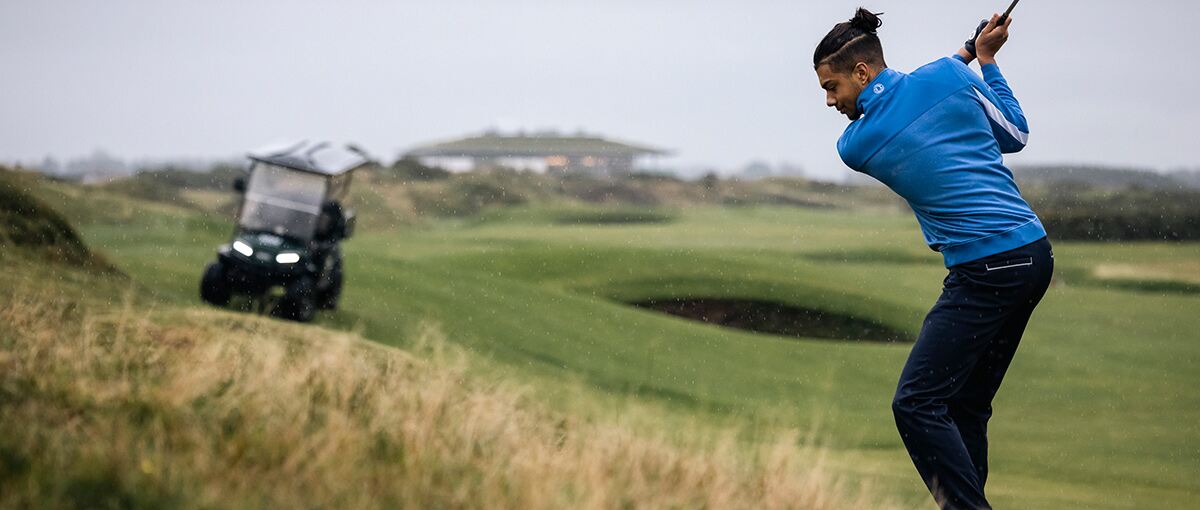Table of Contents
- How Long Do You Have To Identify A Golf Ball?
- The Rules Of Golf: Finding And Identifying A Golf Ball
- FAQs
- Conclusion
With the new changes to the Rules of Golf (as of 2023), it's important to brush up on your knowledge and make sure you're playing the game correctly. Although previous golf rules stated that you could take up to five minutes to search for a ball, this time has been lowered to ensure that games are played in a prompt and continuous way.
While the reason for these changes makes sense, it can still be tricky to figure out how these new rules affect your game. Fortunately, we've simplified the rules of identifying and searching for balls to help you the next time you're on the putting green. So - grab your clubs and buddies, and let's get that search started.
How Long Do You Have To Identify A Golf Ball?According to the official Rules of Golf, players have a full three minutes to identify their golf ball. If you find it in the three-minute window of your ball search time, you're allowed to take as much time as you need during the three minutes to identify your golf ball. This essentially means that if you find your ball within a minute, you can use the additional two minutes to identify it. However, if you find your ball just as the three-minute search time is about to expire, official golf rules state that you're then allowed up to an additional one minute to identify your lost ball. The extra minute is usually allowed in situations where the clock is nearly up and gives golfers the opportunity to make a proper identification. When does your time start?The time for your ball search starts when a player (or his or her caddie) begins actively searching for lost balls. So, once you start looking for your ball in the area where it's most likely to be, the three-minute search time will begin. It's important to remember that there are certain situations where the clock may stop temporarily, such as when the play is suspended or if you mistakenly identify a wrong ball. The search time will still stay at three minutes and will include any time taken before the interruption and once the ball search continues. |
The Rules Of Golf: Finding And Identifying A Golf Ball
The official Rules of Golf clearly outline all of the golf rules you must be aware of when you're searching for your lost ball. These rules also give you a more detailed understanding of how to handle certain situations.
Below are the basic building blocks of the most recent golf rules and what to do when you're searching for your ball:
Searching for a golf ball
In golf, it's the responsibility of each player to find their ball after making a stroke. To do this, players are allowed to take certain actions in finding and identifying their balls. Some of these actions include moving sand, water, and objects like bushes, tree branches, and grass.
In some cases, you're able to break these objects if they get in the way of your search. As long as they are broken as a result of reasonable efforts to find your original ball, there shouldn't be a penalty for this. Still, a general penalty could apply if your actions exceed what the golf rules outline as part of a fair ball search.
Sand and lie of the ball
Oftentimes, we can't help when our ball lands in the sand. But there are golf rules about how to identify your ball when this happens, so it's important to pay attention to what the Rules of Golf state if you ever find yourself in this situation.
If the sand affecting your ball's lie is moved during your search period, you'll need to restore the original lie as best as you can. Similarly, if part of the ball was obscured by sand, you can leave that part visible after you've fixed the lie. When you play without restoring the original lie, you may be penalised.
Identifying the ball
There are several ways to identify your ball at rest. You can either confirm which ball is yours by watching it come to a stop or by looking for an identifying mark on it. However, the latter doesn't apply when there's another ball with the same mark found nearby.
Similarly, you can identify the ball by finding one with the same brand, model, number, and condition as your ball in the search area. Still, if you find an identical ball in the same area and there's no way of distinguishing them, this rule doesn't apply. Instead, you'll have to adhere to the Rules of Golf Rule 18.3c(2).
Rule 18.3c(2)
According to official golf rules, there are two main situations where the provisional ball takes on the role of the player's ball that is currently in play with a penalty stroke and by returning it to the original spot.
The first scenario is when the initial ball is lost anywhere on the course other than a penalty area or out of bounds. The original ball is no longer in play and should be discarded, even if it is found afterwards.
The second situation is when the interim ball is played closer to the hole than where the original ball is supposed to be. As in the first situation, the ball is no longer in play - even if it is found later or if it's closer to the hole than it was thought to be.
If you can't differentiate between the provisional and original balls in the same location and you only find one ball, that will then be treated as the provisional ball in play. If you find both balls, however, you'll need to choose which one should be treated as the new ball. The other then becomes the original ball and can't be used anymore.
Lifting the ball to identify it
In situations where the ball might be the original but you're not sure where it landed, you have the option to lift it to check whether it's yours. Before you lift it, you'll need to mark its exact location first. And, while you're allowed to clean the ball slightly to identify it, excessive cleaning is strongly discouraged (unless you're on the putting green).
If the ball that you lift belongs to you or a fellow competitor, you must place it back on the spot that you've marked. It's important to note that if you lift the ball without reasonable cause and don't mark the spot before you lift it, or if you clean it without reason, you could be in for a penalty.
Accidentally moving the ball
When you're searching for the ball and it's accidentally moved by you or another player, then there's no penalty. If you move the ball intentionally before you start your search, however, you'll incur a penalty.
As per the Rules of Golf, 'accidentally' moving the ball refers to when the ball is moved during your search as part of reasonable efforts to find it. When this happens, you simply need to put it back in its original spot (or as close to the estimated spot as possible). There are also specific rules that you may need to be aware of in cases where the ball is against an immovable object, like a rock, or if it was covered by sand.
FAQsWhat happens if you find your ball after three minutes?Once the allotted three minutes of search time has expired, your initial ball is deemed lost and is no longer in play. The three minutes that you are given are to encourage players to follow the underlying principle that golf should be played in a continuous fashion, avoiding delays as much as possible. Of course, this rule is intended to speed up play during events and tournaments. The three-minute search time doesn't have to apply when you're playing a casual game. What happens if you can't find your ball?If you can't find your ball within the allotted three minutes, then you will incur a penalty. You'll also need to replace your ball and continue as normal by playing your next shot. It's important to remember that a ball cannot be deemed lost until a player or his or her caddie has searched for it. |
Conclusion
With the changes to the Rules of Golf in 2023, players now have a three-minute search time to find and identify their balls. The search time isn't the only factor at play, however. You must also pay close attention to certain circumstances where the rules change, when the time is halted, or whether you're allowed additional time to identify your ball.
Our short guide is easy to understand, fortunately, so you'll have the new rules down pat in no time.










